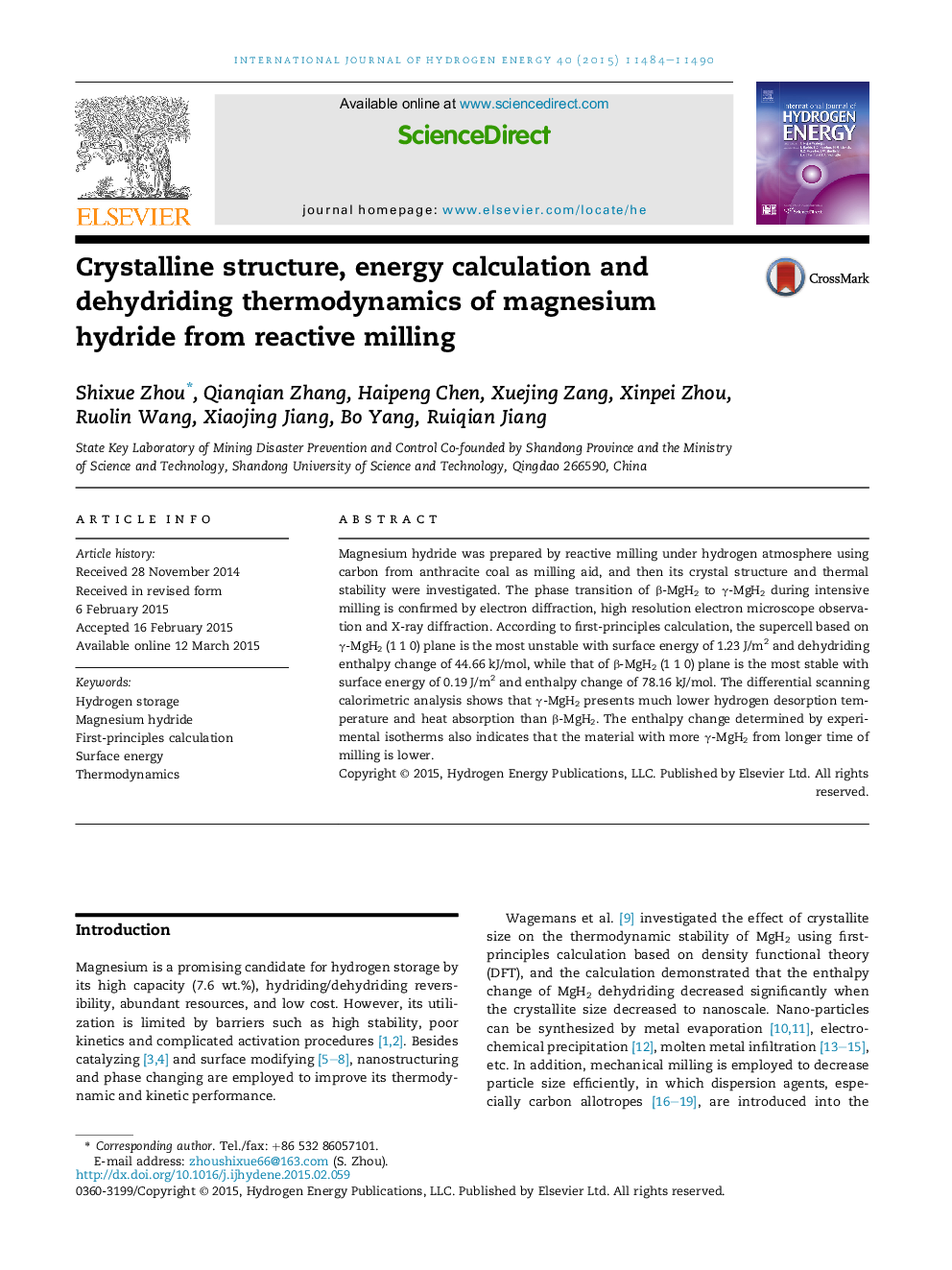| Article ID | Journal | Published Year | Pages | File Type |
|---|---|---|---|---|
| 7714066 | International Journal of Hydrogen Energy | 2015 | 7 Pages |
Abstract
Magnesium hydride was prepared by reactive milling under hydrogen atmosphere using carbon from anthracite coal as milling aid, and then its crystal structure and thermal stability were investigated. The phase transition of β-MgH2 to γ-MgH2 during intensive milling is confirmed by electron diffraction, high resolution electron microscope observation and X-ray diffraction. According to first-principles calculation, the supercell based on γ-MgH2 (1 1 0) plane is the most unstable with surface energy of 1.23 J/m2 and dehydriding enthalpy change of 44.66 kJ/mol, while that of β-MgH2 (1 1 0) plane is the most stable with surface energy of 0.19 J/m2 and enthalpy change of 78.16 kJ/mol. The differential scanning calorimetric analysis shows that γ-MgH2 presents much lower hydrogen desorption temperature and heat absorption than β-MgH2. The enthalpy change determined by experimental isotherms also indicates that the material with more γ-MgH2 from longer time of milling is lower.
Related Topics
Physical Sciences and Engineering
Chemistry
Electrochemistry
Authors
Shixue Zhou, Qianqian Zhang, Haipeng Chen, Xuejing Zang, Xinpei Zhou, Ruolin Wang, Xiaojing Jiang, Bo Yang, Ruiqian Jiang,
